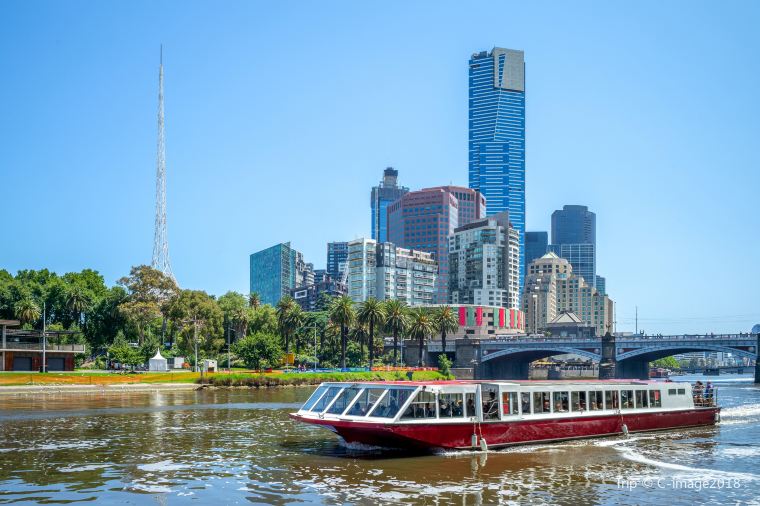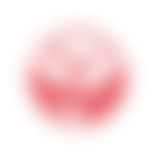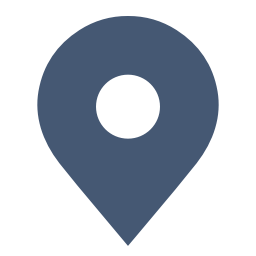Melbourne, the cultural capital of Australia, sits in the southeastern corner of the country, hugging the shores of Port Phillip Bay. Known for its famously unpredictable weather, the city experiences a temperate oceanic climate, meaning you might witness four seasons in a single day. Summers can be warm, with temperatures soaring to around 35°C (95°F), while winters remain cool but rarely extreme, with lows hovering around 6°C (43°F). The city's ever-changing climate plays a significant role in how you should plan your trip.
Weather & Seasons in Melbourne
☀️ Summer (December to February)
Expect warm to hot days, with temperatures ranging from 14°C to 35°C (57°F to 95°F). Heatwaves can push temperatures above 40°C (104°F), but cool changes often bring relief. Humidity is moderate, and rainfall is sporadic.
👕 What to Wear
Lightweight, breathable clothing is a must. Bring sunglasses 🕶️, sunscreen 🧴, and a hat 🧢 to shield yourself from the strong Aussie sun. If you're staying out late, a light jacket might come in handy as evenings can be breezy.
🏖️ Best Seasonal Activities
Hit the beaches along the Mornington Peninsula, enjoy rooftop bars with stunning city views, or take a drive along the Great Ocean Road. Outdoor events like the Australian Open and the St Kilda Festival bring the city to life.
🎉 Local Festivals & Events
- 🎾 Australian Open (January) – A major highlight, attracting tennis fans from around the world.
- 🎶 St Kilda Festival (February) – Live music, food stalls, and a vibrant seaside atmosphere.
 🍂 Autumn (March to May)
🍂 Autumn (March to May)

The temperatures start to cool, ranging between 10°C and 25°C (50°F to 77°F). This is one of Melbourne's most pleasant seasons, with mild days and crisp evenings. Rainfall increases slightly, but it’s nothing that will disrupt travel plans.
🧥 What to Wear
Layering is key. A light sweater or jacket is useful for cooler evenings, while comfortable walking shoes 👟 will come in handy as you explore the city.
🍷 Best Seasonal Activities
Autumn is perfect for exploring Melbourne’s parks, which transform into a stunning mix of reds, oranges, and yellows. The Yarra Valley wineries 🍇 are also at their best, making it a great time for wine tasting.
🎊 Local Festivals & Events
- 🎡 Moomba Festival (March) – Parades, fireworks, and carnival rides take over the city.
- 🍽️ Melbourne Food & Wine Festival (March-April) – A great opportunity to sample gourmet delights.
 ❄️ Winter (June to August)
❄️ Winter (June to August)

Melbourne’s winter is cool but not freezing, with temperatures dipping between 6°C and 15°C (43°F to 59°F). Rain is more frequent, and the wind chill can make it feel colder than it is.
🧣 What to Wear
A warm jacket 🧥, scarf 🧣, and waterproof shoes will keep you comfortable. If you’re planning day trips to higher altitudes like the Dandenong Ranges, gloves 🧤 and a beanie are a good idea.
☕ Best Seasonal Activities
Take advantage of Melbourne’s world-class coffee scene ☕ and cozy up in laneway cafes. If you're up for a snowy adventure, head to Mount Buller 🏔️ for skiing and snowboarding.
🎬 Local Festivals & Events
- 🛍️ Winter Night Market (June-August) – Queen Victoria Market transforms into a winter wonderland with food, live music, and mulled wine.
- 🎥 Melbourne International Film Festival (August) – A treat for cinema lovers.
 🌸 Spring (September to November)
🌸 Spring (September to November)

Spring starts off cool but gradually warms up, with temperatures between 9°C and 22°C (48°F to 72°F). This season is known for its unpredictable weather—one minute it’s sunny, the next it’s raining.
🧥 What to Wear
Layering remains essential. A light jacket or trench coat is handy, and an umbrella ☔ is a must since spring showers can be sudden.
🌺 Best Seasonal Activities
Stroll through the Royal Botanic Gardens, which come alive with colorful blooms. Day trips to the Dandenong Ranges or the Great Ocean Road are particularly scenic during this time.
🏇 Local Festivals & Events
- 🏆 Melbourne Cup (November) – The pinnacle of the city's spring social calendar, featuring extravagant outfits and world-class horse racing.
- 🎡 Royal Melbourne Show (September-October) – A family-friendly event filled with rides, food, and farm animals 🐑.
Melbourne’s weather may keep you on your toes, but that’s part of its charm. No matter when you visit, there’s always something exciting to experience—just pack accordingly! 🎒

☀️ Best Time to Visit Melbourne – Month-by-Month Guide
Melbourne’s weather shifts dramatically throughout the year, offering different experiences for every type of traveler. Summer is ideal for beach lovers and outdoor events, while autumn’s mild temperatures attract food and wine enthusiasts. Winter is perfect for cultural experiences and nearby snow trips, whereas spring blooms with festivals and colorful gardens. Whether you’re after warm sunshine, festive vibes, or cozy winter cafes, here’s a breakdown of Melbourne weather by month to help you choose the best time to visit.
Month | Temperature Range (°C/°F) | Rainfall Levels (mm/inches) | Traveler Insights |
January | 16-30°C (61-86°F) | 47mm (1.85in) | Peak summer ☀️—great for beaches, rooftop bars, and the Australian Open 🎾. Expect crowds and higher prices. |
February | 16-29°C (61-84°F) | 48mm (1.89in) | Warm and lively! Enjoy the St Kilda Festival 🎶 and outdoor dining. A good mix of sunshine and occasional rain. |
March | 14-26°C (57-79°F) | 50mm (1.97in) | Ideal weather for exploring 🍂. Moomba Festival and Food & Wine Festival make it a foodie’s dream. |
April | 11-22°C (52-72°F) | 58mm (2.28in) | Autumn colors emerge 🍁. Perfect for day trips to the Yarra Valley 🍷. Cooler nights, so bring a light jacket. |
May | 9-17°C (48-63°F) | 57mm (2.24in) | Crisp and cool. Fewer tourists, cozy café culture ☕ thrives. Great for art galleries and laneway exploring. |
June | 7-14°C (45-57°F) | 49mm (1.93in) | Winter begins ❄️. Head to Mount Buller 🏔️ for snow sports. Indoor attractions like museums are a great escape from the chill. |
July | 6-14°C (43-57°F) | 47mm (1.85in) | Coldest month! Bundle up 🧣. The Winter Night Market at Queen Victoria Market is a must-visit for warm food and live music. |
August | 6-16°C (43-61°F) | 50mm (1.97in) | Cool and cultural 🎭—perfect for the Melbourne International Film Festival. Occasional showers, so bring an umbrella ☔. |
September | 8-18°C (46-64°F) | 58mm (2.28in) | Spring blooms 🌸! Warmer days begin. Visit the Royal Botanic Gardens and enjoy the Royal Melbourne Show 🎡. |
October | 10-21°C (50-70°F) | 66mm (2.60in) | Warmer but unpredictable 🌦️. Great for road trips along the Great Ocean Road. Bring a light rain jacket. |
November | 12-24°C (54-75°F) | 58mm (2.28in) | Melbourne Cup 🏇 dominates the city! Mild weather, longer days—perfect for exploring markets and gardens. |
December | 14-27°C (57-81°F) | 59mm (2.32in) | Summer kicks off! Christmas festivals 🎄 and beach days. Be prepared for occasional heatwaves. |
Melbourne’s weather may keep you on your toes, but that’s part of its charm. No matter when you visit, there’s always something exciting to experience—just pack accordingly! 🎒
Some Hotels to Stay in Melbourne
Crowds, Costs & Festivals: Choosing the Right Time to Visit Melbourne
1️⃣ Peak Season (Busiest & Most Popular Months)
📅 Months: December to February
🌞 Why These Months Attract Visitors:
- Ideal Weather: Summer in Melbourne brings warm temperatures, perfect for beach outings 🏖️ and outdoor events 🎶.
- Festivals & Events: Major events like the Australian Open 🎾 in January draw international crowds.
🚶♂️ Crowds & Costs:
- High Demand: Expect bustling streets 🚶♀️ and packed attractions 🏛️.
- Increased Prices: Flights ✈️ and accommodations 🏨 are at their priciest.
✅ Pros:
- Vibrant Atmosphere: The city is alive with festivals 🎭, markets 🛍️, and outdoor dining 🍽️.
- Extended Daylight: Longer days mean more time to explore ⏳.
❌ Cons:
- Overcrowding: Popular spots can be packed, leading to longer wait times ⏳.
- Premium Costs: Higher expenses 💰 for travel and lodging.
💡 Smart Travel Hacks:
- Advance Bookings: Secure accommodations and event tickets months ahead 📆.
- Explore Offbeat Attractions: Visit lesser-known sites 🏞️ to escape the crowds.
2️⃣ Shoulder Season (Balanced Months for Weather & Crowds)
📅 Months: March to May (Autumn) 🍂 and September to November (Spring) 🌸
🌤️ Why These Months Are Ideal:
- Mild Temperatures: Comfortable weather enhances sightseeing experiences 🏙️.
- Fewer Tourists: Attractions are less crowded, offering a relaxed vibe 😌.
🧳 Traveler Suitability:
- Budget-Conscious Explorers: Enjoy reasonable prices 💵 without compromising on experience.
- Cultural Enthusiasts: Engage in local festivals 🎡 and events unique to these seasons.
3️⃣ Off-Peak Season (Least Crowded & Most Budget-Friendly Time)
📅 Months: June to August ❄️
🌨️ Why These Months Are Less Busy:
- Cooler Weather: Winter brings cooler temperatures, deterring some tourists 🥶.
💰 Cost & Crowd Levels:
- Lower Prices: Enjoy discounted rates on flights ✈️ and accommodations 🏨.
- Minimal Crowds: Experience attractions without the usual hustle 🚶♂️.
✅ Advantages & Downsides:
- Pros: Ideal for travelers seeking tranquility 😌 and budget deals 💸.
- Cons: Cooler weather may limit some outdoor activities 🌧️.
🎒 Preparation Tips:
- Layered Clothing: Pack warm clothes 🧥 to stay comfortable.
- Indoor Activities: Explore Melbourne's museums 🖼️, galleries 🎭, and cafes ☕.
4️⃣ Major Festivals & Events That Impact Travel
🎾 Australian Open (January): A grand slam event attracting tennis fans worldwide 🌍.
🍷 Melbourne Food & Wine Festival (March): Celebrates the city's culinary scene 🍽️.
😂 Melbourne International Comedy Festival (April): One of the world's largest comedy festivals 🎤.
🏇 Melbourne Cup Carnival (November): A major horse racing event that stops the nation 🎩.
⚠️ Impact on Travel:
- Increased Demand: These events lead to higher prices 💵 and limited availability 🏨.
- Advance Planning: Book accommodations and tickets well in advance 🎟️.
- Immersive Experience: Participating in these events offers a deep dive into Melbourne's culture 🇦🇺.
By aligning your visit with Melbourne's seasonal nuances and event calendar, you can tailor your experience to match your preferences and budget. 🎒✨
Flight to Melbourne
- Satu Arah
- Pulang-Pergi
- direct cheapest
 CGK01:156h 35mLangsungMEL11:50Jakarta - Melbourne|Min, 8 Mar|Garuda IndonesiaCAD 399CAD 47015% OFF15% OFFCAD 470CAD 399
CGK01:156h 35mLangsungMEL11:50Jakarta - Melbourne|Min, 8 Mar|Garuda IndonesiaCAD 399CAD 47015% OFF15% OFFCAD 470CAD 399  CGK01:156h 35mLangsungMEL11:50Jakarta - Melbourne|Jum, 6 Mar|Garuda IndonesiaCAD 399CAD 47015% OFF15% OFFCAD 470CAD 399
CGK01:156h 35mLangsungMEL11:50Jakarta - Melbourne|Jum, 6 Mar|Garuda IndonesiaCAD 399CAD 47015% OFF15% OFFCAD 470CAD 399 CGK19:3030h 10m1 stopMEL05:40Jakarta - Melbourne|Min, 8 Mar|TransNusaCAD 201CAD 47056% OFF56% OFFCAD 470CAD 201
CGK19:3030h 10m1 stopMEL05:40Jakarta - Melbourne|Min, 8 Mar|TransNusaCAD 201CAD 47056% OFF56% OFFCAD 470CAD 201 CGK07:1018h 30m1 stopMEL05:40Jakarta - Melbourne|Sel, 10 Mar|TransNusaCAD 201CAD 201
CGK07:1018h 30m1 stopMEL05:40Jakarta - Melbourne|Sel, 10 Mar|TransNusaCAD 201CAD 201 JKT1:00 PM3h 5mLangsungMEL2:00 PMJakarta - Melbourne|Mon, Dec 22|Garuda IndonesiaTemukan Penerbangan LainnyaTemukan Penerbangan Lainnya
JKT1:00 PM3h 5mLangsungMEL2:00 PMJakarta - Melbourne|Mon, Dec 22|Garuda IndonesiaTemukan Penerbangan LainnyaTemukan Penerbangan Lainnya
Harga penerbangan yang ditampilkan dari ${{departCityName}} ke ${{arrivalCityName}} didasarkan pada rata-rata harga berbagai maskapai untuk 3 bulan ke depan, menurut basis data terbaru Trip.com.
Best Time to Visit Melbourne Based on Your Travel Style
1️⃣ Budget Travelers 💰 If you're looking for the best time to visit Melbourne on a budget, aim for May to August. This is the city's off-season, meaning you'll find the cheapest flights and hotel rates. While it's Melbourne’s winter, the temperatures are still manageable (averaging 6-14°C/43-57°F), and you’ll avoid the high costs of peak summer.
💡 Money-saving tips:
- ✈️ Book flights at least 2-3 months in advance for the best rates.
- 🏛️ Take advantage of free attractions like the National Gallery of Victoria, Federation Square, and the Royal Botanic Gardens.
- 🚋 Use the free City Circle tram to explore the CBD without spending on transport.
2️⃣ Luxury Travelers ✨ For a high-end Melbourne experience, September to November (spring) and March to May (autumn) are perfect. These months bring mild weather, making it ideal for outdoor fine dining, luxury boutique shopping, and exclusive cultural events.
🌟 Luxury highlights:
- 🏨 Stay at Crown Towers Melbourne for a world-class experience with top-tier amenities.
- 🍽️ Dine at Attica, one of Australia's best Michelin-starred restaurants.
- 🍷 Book a private Yarra Valley wine tour for a VIP tasting experience.
- 🎾 Plan early for Australian Open VIP tickets in January if you love tennis.
3️⃣ Adventure Seekers 🌍 Melbourne offers year-round adventure, but the best time depends on your activity of choice:
- 🌊 Surfing: Head to Bells Beach between March and May for the best swells.
- 🥾 Hiking: The Grampians and Great Ocean Walk are stunning from September to November when wildflowers bloom.
- ⛷️ Snow Sports: July and August are prime for skiing at Mount Buller and Falls Creek.
- 🎈 Hot Air Ballooning: The best flights over the Yarra Valley are in autumn (March-May) when the air is crisp and calm.
For off-the-beaten-path thrills, check out the Otway Fly Treetop Walk 🌳 or go cage diving with sharks 🦈 in nearby Port Lincoln!
4️⃣ Cultural Enthusiasts 🎭 Melbourne’s cultural scene is unbeatable, and the best months to experience it are during major festivals:
- 👗 March: Melbourne Fashion Festival & Moomba Festival (Australia’s largest free community festival)
- 🎬 July-August: Melbourne International Film Festival for cinephiles
- 🎨 October-November: Melbourne International Arts Festival for world-class performances
- 🎾 January: Australian Open—perfect for sports and entertainment lovers
For a quieter cultural visit, come in May or September when museums and galleries are less crowded. Visit Flinders Street Station, the State Library of Victoria, and Queen Victoria Market without the tourist rush.
5️⃣ Family Travelers 👨👩👧👦 If you're traveling with kids, the best time to visit Melbourne is March to May (autumn) or September to November (spring). These months offer mild weather, fewer crowds, and great outdoor family activities.
👶 Family-friendly highlights:
- 🦁 Visit Melbourne Zoo and SEA LIFE Aquarium in spring when animals are most active.
- 🎡 Check out Luna Park and St. Kilda Beach in autumn for pleasant weather.
- ☀️ If visiting in summer (December-February), be prepared for school holiday crowds—book family-friendly accommodations early.
- ❄️ Winter (June-August) is great for an indoor fun day at Scienceworks Museum or Legoland Discovery Centre.
Whenever you visit, Melbourne’s diverse experiences ensure there’s something for everyone! 🌏
Final Tips for Planning Your Trip to Melbourne
Melbourne has something for every traveler, whether you're chasing adventure, luxury, culture, or budget-friendly experiences. For perfect weather and exciting events, visit during spring (September-November) or autumn (March-May). If you’re after cheaper prices, winter (June-August) is your best bet. And for those who love the buzz of summer festivals and beach days, December to February is ideal. No matter when you visit, Melbourne’s vibrant energy and endless attractions will make your trip unforgettable! ✨
Now that you know the best time to visit Melbourne, it’s time to plan your perfect trip! ✈️ Check out our Where to Stay in Melbourne guide to find the ideal neighborhood and hotel. Need inspiration? Dive into our Top Things to Do in Melbourne for must-visit spots and hidden gems. So, Book your Ticket to Melbourne Now! Happy travels! 🌏
FAQs: Common Questions About Visiting Melbourne ❓
1️⃣ What’s the best way to get around Melbourne? 🚋
Melbourne has an excellent public transport system! I highly recommend getting a myki card for trams, trains, and buses. The CBD trams are free, so take advantage of them. For convenience, rideshare apps like Uber and taxis are widely available, but public transport is often the cheapest and easiest way to explore.2️⃣ How much should I budget per day in Melbourne?
💰 A daily budget depends on your travel style: Budget travelers: $50-$80 AUD (hostels, public transport, free attractions) Mid-range: $150-$250 AUD (hotels, dining out, paid attractions) Luxury: $400+ AUD (5-star hotels, fine dining, private tours) To save money, eat at Queen Victoria Market and use free city trams!3️⃣ Is Melbourne safe for tourists? 🔐
Absolutely! Melbourne is one of the safest cities in Australia. Stick to well-lit areas at night and be mindful of pickpockets in crowded spots. Solo travelers will feel comfortable exploring, but like any city, it's always good to stay aware of your surroundings.4️⃣ What’s the best neighborhood to stay in? 🏨
CBD: Best for first-time visitors, close to attractions. Fitzroy: Trendy cafes, street art, and nightlife. St Kilda: Beachside vibes with a relaxed atmosphere. Southbank: Luxury hotels with stunning city views.5️⃣ What’s the best local food to try? 🍽️🐨
Meat pie 🥧 – Try one from a local bakery. Flat white coffee ☕ – Melbourne’s coffee culture is legendary! Dim sims 🥟 – South Melbourne Market has the best ones. Parma (Chicken Parmigiana) 🍗 – A pub classic.6️⃣ What’s a common tourist mistake in Melbourne? ❌
Not bringing a jacket! Melbourne’s weather is famous for changing quickly. Pack layers, even in summer.7️⃣ What’s the best time to visit Melbourne for good weather & fewer crowds? ☀️
For great weather and fewer crowds, visit in March-May (autumn) or September-November (spring). You’ll enjoy mild temperatures and smaller tourist crowds compared to summer.8️⃣ Do I need cash, or can I use a credit card everywhere? 💳
Most places accept credit cards and contactless payments, but it’s handy to have some cash for markets and small vendors.9️⃣ Is tipping expected in Melbourne? 💵
Tipping isn’t mandatory, but it’s appreciated for great service! In restaurants, a 10% tip is common for exceptional service.🔟 What are the best free things to do in Melbourne? 🆓
Stroll through Royal Botanic Gardens 🌿 Explore Street Art in Hosier Lane 🎨 Visit Queen Victoria Market 🛍️ Ride the free City Circle tram 🚋 Watch the sunset at St Kilda Beach 🌅

 NO.1
NO.1



